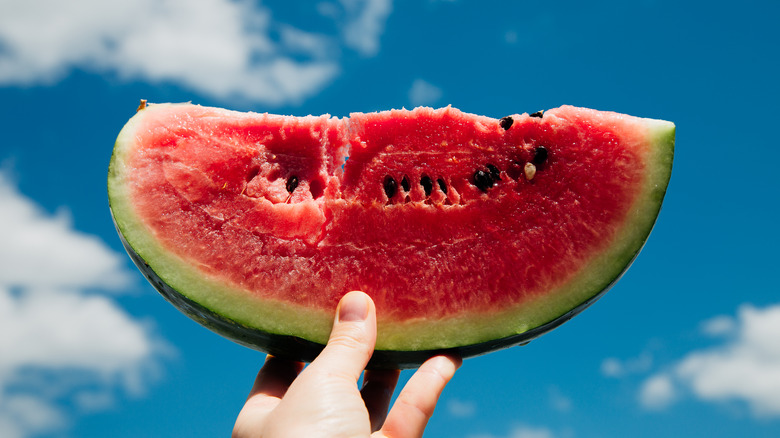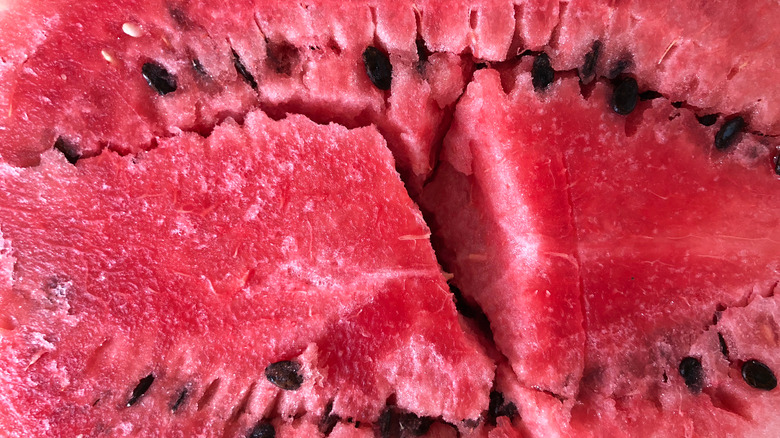Can You Safely Eat A Split Watermelon?
Summer is approaching, and with it, seasonal produce. Often, that means pulling out your phone for a Google in your kitchen or local produce stand to find out how to pick the best tomatoes or to ask if corn with matted brown silk is still fresh? Another pressing question for the times is if it's safe to eat split watermelon.
Well, that depends on what you mean by "split." No, you shouldn't eat a watermelon if there's a gash in the rind — that's just common sense. But watermelons with split insides are a little trickier. The short answer is: Yes, a watermelon with cracked innards is perfectly safe. Despite the lack of risk, is there any reason why you might not want to eat a split watermelon? What causes the cracks in the first place?
Contrary to some sketchy internet science, split watermelon flesh isn't necessarily a sign the fruit is a GMO or raised using growth hormones. Cracked watermelons won't, as one YouTube video claimed, explode or cause tumors. The cracks, known as hollow heart disorder, are a perfectly normal response to growth conditions.
"It's not like a disease where you have a fungus or a bacteria or a nematode in the area," Gordon Johnson, a University of Delaware researcher, told Phys.org. "It is something that occurs when it occurs, and doesn't occur when it doesn't occur." Johnson's research found that gashes in watermelon flesh are typically a result of poor pollination. Factors like chilly weather or droughts can be culprits, too.
Do split watermelons taste bad?
Hollow heart watermelons (the term for watermelons with split insides) don't necessarily taste bad — in fact, they're often sweeter than normal melons. The texture might be a little weird, though, and you won't get as much melon-y bang for your buck. You won't know for sure if your watermelon is split before you open it, but there are a few signs to watch out for if you'd prefer to avoid hollow heart melons.
Rapping on the watermelon — a longtime favorite among melon enthusiasts — can provide clues. Conventional wisdom says you should pick a watermelon with a deep, resonant sound. You might want to avoid melons that sound too deep and resonate, though, since it could be a sign of a hollow heart.
After you've knocked the melons around, check the shape. Hollow heart watermelons tend to have a triangular shape, which aligns with the three-pronged split down the center. Seedless varieties are more prone to cracks, too.
Don't throw a split watermelon out. A minor blemish doesn't warrant food waste. You should toss any melon with strange smells, a slimy texture, or obvious moldy spots; but a slight crack in the flesh isn't a huge concern.

